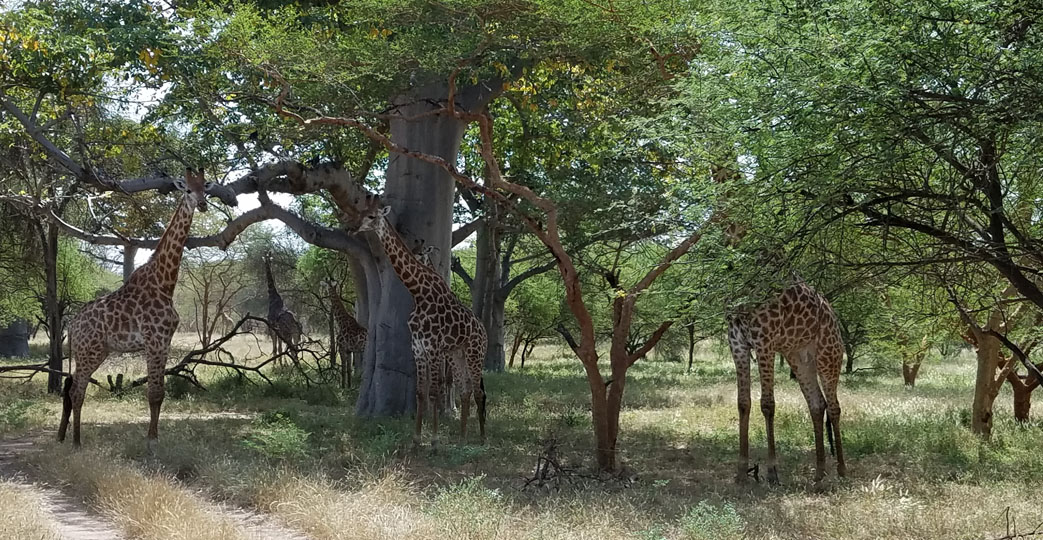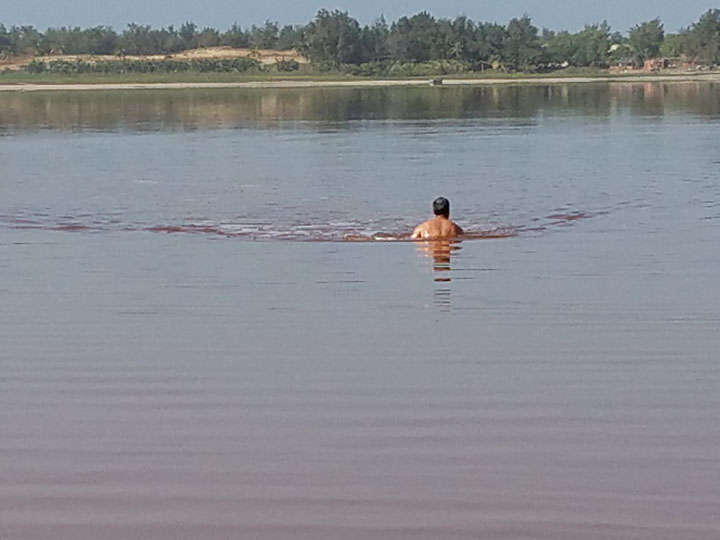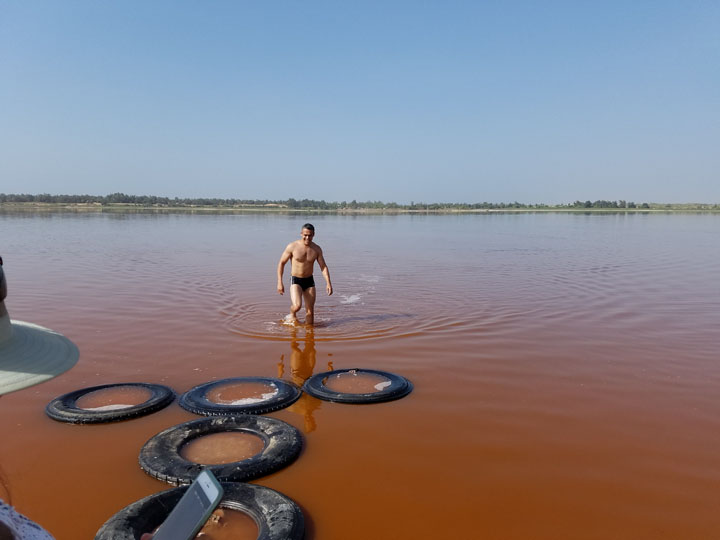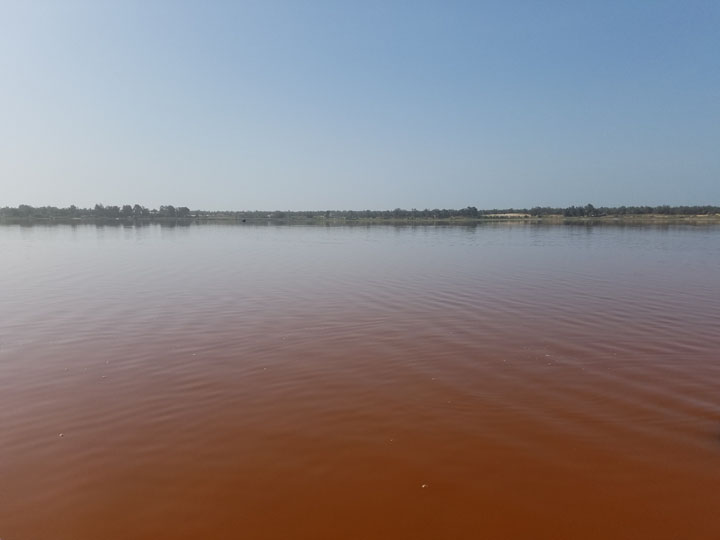The Bandia Reserve is a wildlife park about 65 kilometers from Dakar, Senegal which features a variety of animals from throughout Africa. Although some of Bandia’s animals are native to Senegal, others were transported in from South Africa and elsewhere. The park isn’t big enough to accommodate the hunting needs of large predators such as lions; therefore, it features only herbivores such as giraffes, antelope, zebras, etc. The exception is that there is a hyena in a fenced area, and some crocodiles in a stream that’s some distance from where the rest of the animals live.
The Bandia Reserve offers trucks that can be rented, with drivers and guides. Our guide had been with Bandia ever since it opened 20 years ago, so he was able to share with us a large amount of information about the park’s origins and history. The backs of the trucks are open-air and outfitted with benches which can accommodate up to 9 passengers. It was the perfect size for our group.
A network of gravel roads runs throughout the park. The drivers and guides are quite familiar with all the routes. They use phones to stay in touch with other colleagues who are taking other trucks through the park, which is how they know where to find the various types of animals on any given day.
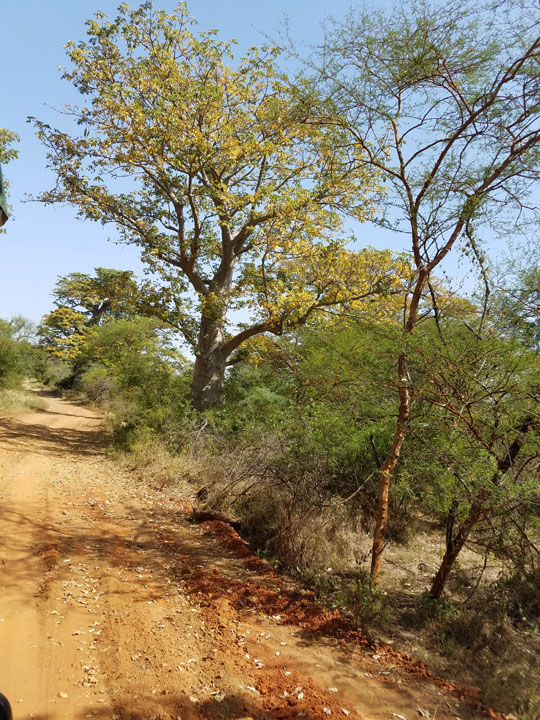
Throughout the park are a variety of trees that are native to West Africa. These acacia trees have vivid reddish bark, which contrasts beautifully with the surrounding vegetation. Senegal lies just south of the Sahara desert with a dry climate whose rainy season runs about 3 months. The acacia trees and other local vegetation are adapted to these dry conditions.
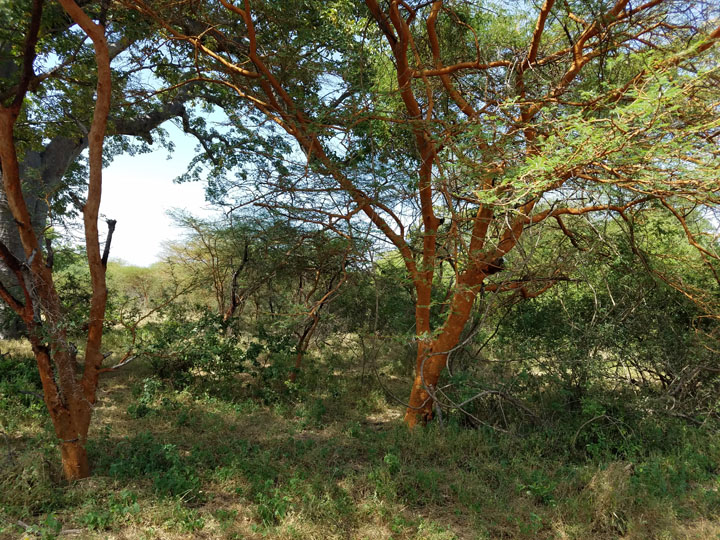
When Bandia Reserve was first started 20 years ago, the owners brought in 4 giraffes from South Africa to start their herd: two male, two female. Today, the herd contains about 50 giraffes. The guide told us they occasionally bring in males from the outside for breeding, to add some diversity to the gene pool. The giraffes are surprisingly comfortable with the truckloads of camera-toting tourists that pass through. Our truck was able to get rather close to them.
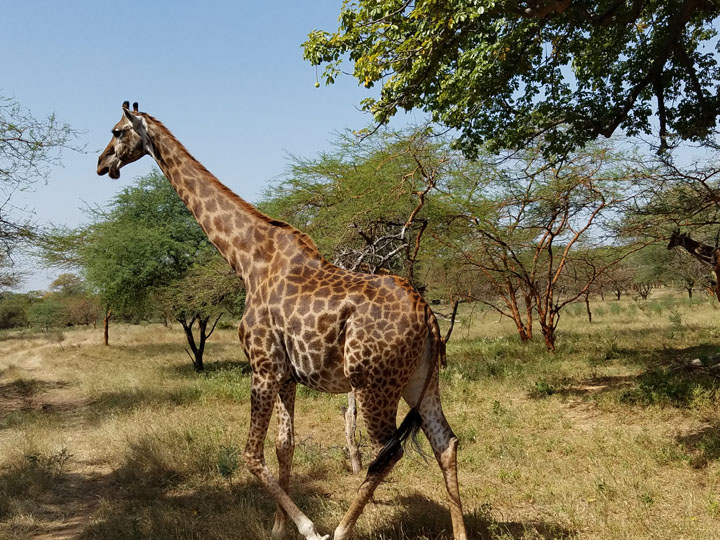
There were several mother giraffes in the park with their babies. I found myself wishing that my late college roommate, Tammy Dudley, could be alive to see those with me. She had always loved giraffes, and owned a collection of over 100 giraffe figurines.
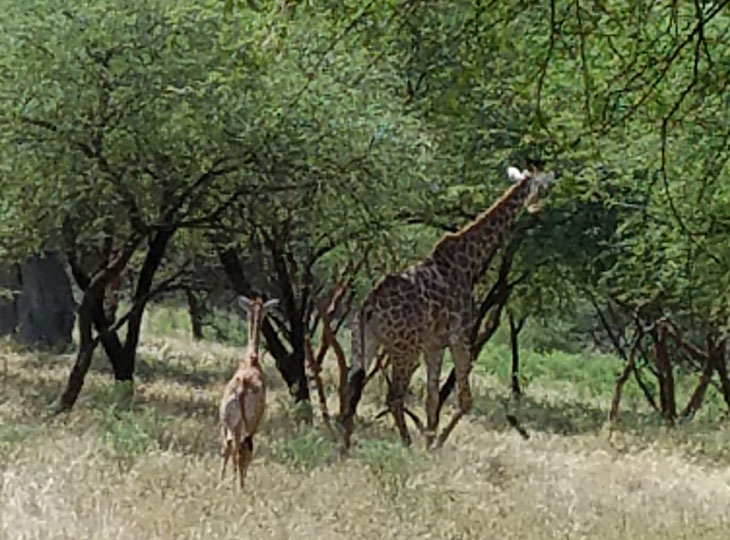
Many of the giraffes stayed together in a herd as they moved through the trees, snacking on the leaves.
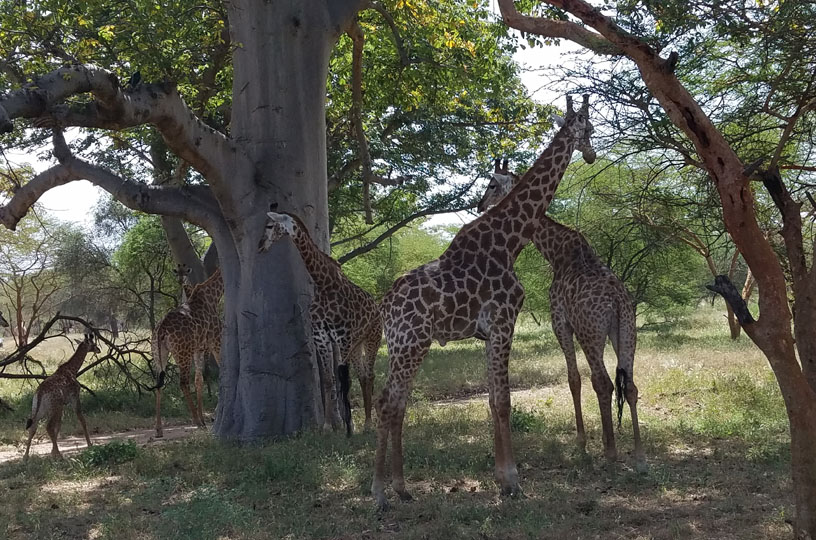
There are a variety of species of gazelles in Bandia Reserve. We didn’t get close enough for me to snap good photos of all of them, but here are the ones I was able to capture.


There are a few small monkeys living inside of Bandia. I only saw this one.
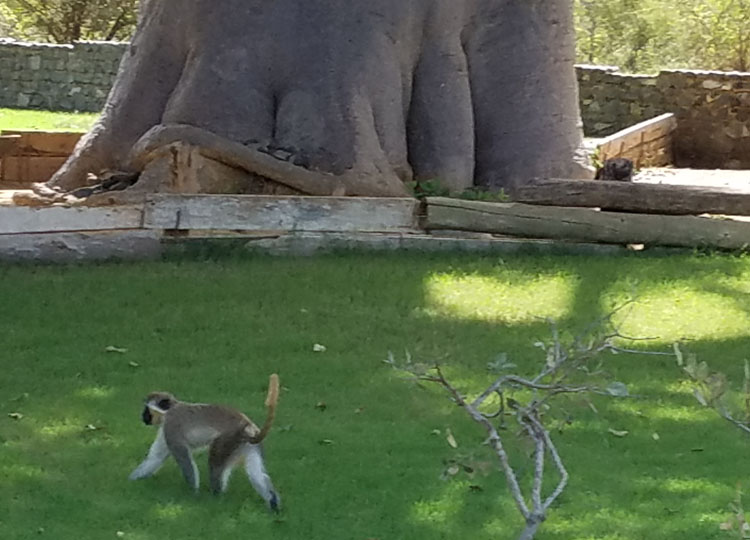
We saw a group of about 3 ostriches near the herd of giraffes.
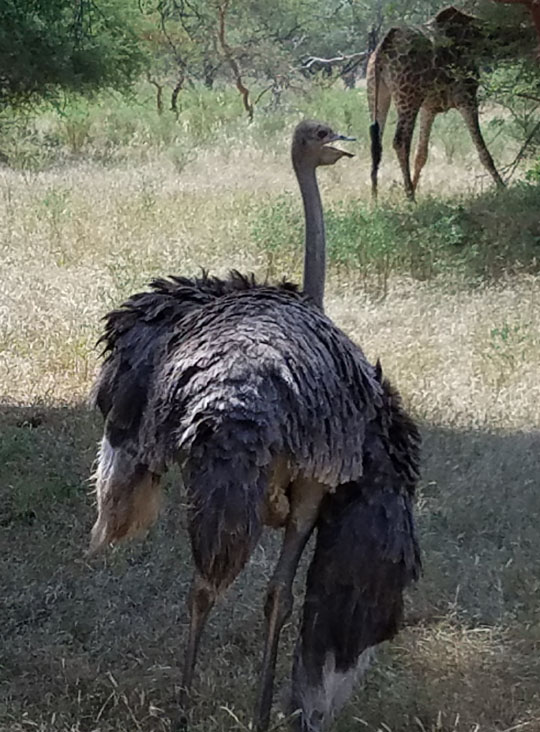
It was surprising to see how close these zebras allowed our truck to get to them.
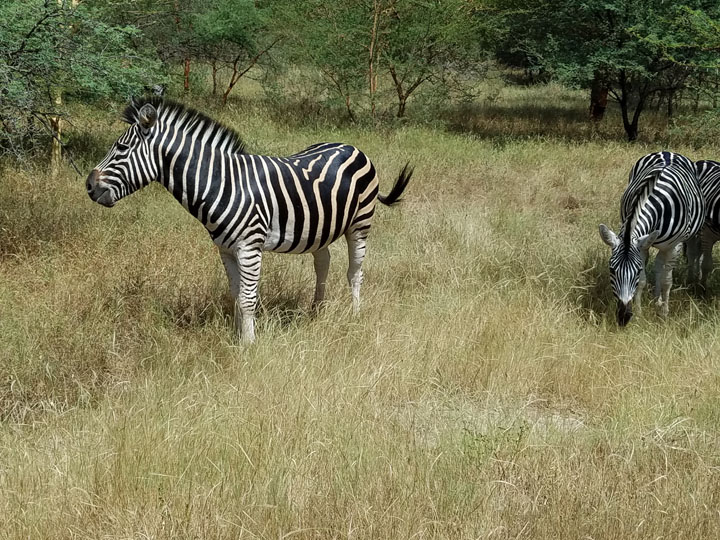
When Bandia Reserve first started 20 years ago, a pair of white rhinocerous (one male, one female) were brought in from elsewhere in Africa to populate it. However, they never produced any young, so today they remain the only two rhinos in the park. The guides and truck drivers use their mobile phones to keep each other informed of where in the park the rhinos are relaxing on any given day. It took some time for us to find the corner of the park where they were the day we visited.

Bandia Reserve contains many large baobab trees. These and the acacias are both very representative of the African landscape. Near the end of the tour we saw this massive baobab tree. It is estimated to be 1,000 years old.
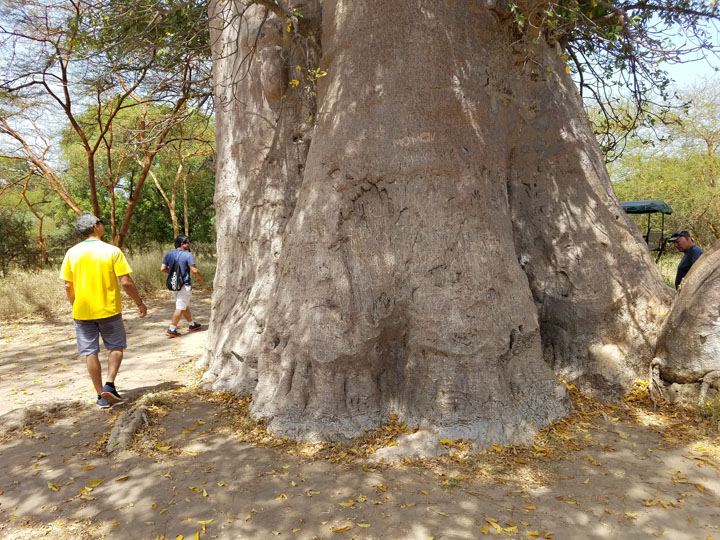
The insides of baobab trees are hollow, and this one has been used for many years as a graveyard for the griots (storytellers). The tree is known as the tombeau de griots. The griots were the elders of a tribe, the keepers of its oral history. When they died, their bones were carefully placed inside this large baobab tree.

This photo, taken from a bit of a distance, shows the large size of the baobab tree.
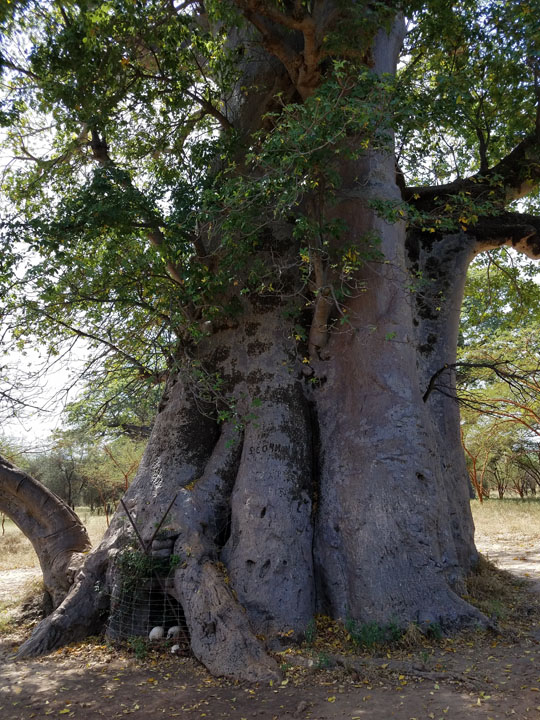
At the end of the tour is a restaurant and a gift shop. In the water next to the restaurant lives a family of Nile crocodiles. They were shy the day we visited, but we did manage to catch a glimpse of one.
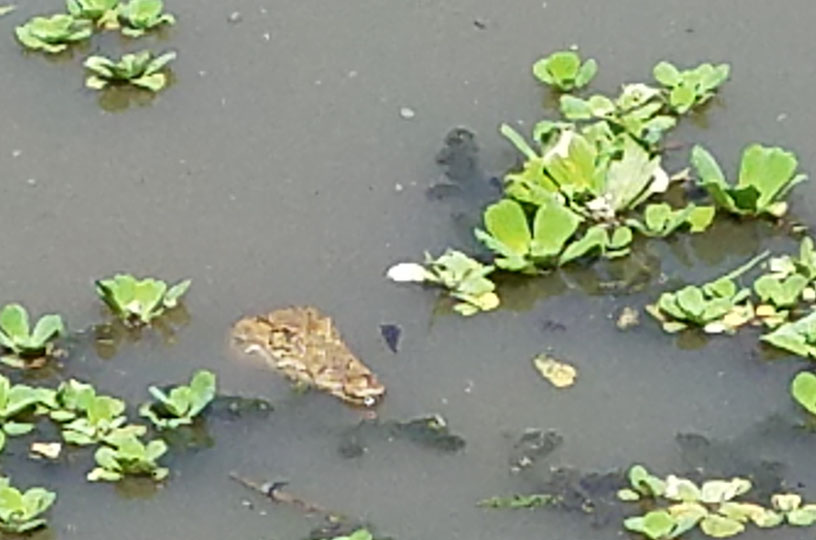
We visited Senegal in October, which is typically a very hot time of year. The day we visited Bandia Reserve, temperatures hovered around 93 F (34 C). By the end of the trip, we all wanted to take a siesta. Our friend Mario Villalobos decided to go ahead and do so while others shopped or picked up snacks at the restaurant!
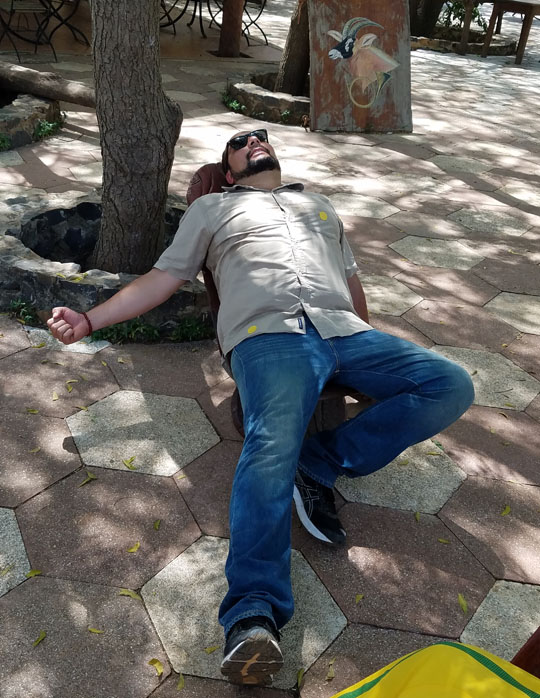
All in all, I was very enthusiastic about our visit to Bandia Reserve. I’ve been told by people who went on photo safaris in South Africa and Kenya that Bandia is smaller and less impressive. However, I have never been to these other countries, and Bandia impressed me a great deal! I’m very glad I went. For me, it was well worth the time, money, and effort!
In case you’re wondering why I was in Senegal for a month, I was there as part of the IBM Corporate Service Corps. You can read more about that here: https://roaming-jewel.com/2017/10/17/ibmcsc/
